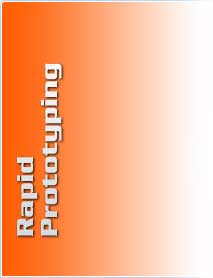

Room Temperature Vulcanization (RTV) rubber silicone molds are an accurate, cost-effective, and speedy way to produce multiple prototype parts. Rubber silicone molds are capable of replicating surfaces and details of an original part. A master pattern, such as one created by a SLA prototype, can be used to form the mold. Rubber silicone molds can be used to make small to medium quantities of parts.
How it works
The rapid prototyping part, which can be produced from any of the rapid prototyping technologies, may need to be oversized to compensate for shrinkage. Once the part is approved by the client, Tech, Inc. will hand-finish the part on all exterior surfaces and/or texture the part as needed. The following steps are taken to create a RTV molded tool:
2. The liquid rubber silicone is poured over the pattern and parting surface combination.
3. As the rubber silicone solidifies, it is removed from the parting materials.
4. Then rubber silicone is poured onto both the pattern and the mold half.
5. Next the pattern is removed and the two rubber silicone sections function as one tool.
Advantages & Uses
RTV molds can be produced in anywhere from 30 minutes to more than 40 hours. A mold can be reproduced 1-3 times a day and can be in production for, generally, around 10-25 uses. Rubber Silicone molds can mimic chemical and structural properties of other materials, including:
- material and thermal properties,
- surface textures,
- and colors
It can also be machined, sanded, glued and/or painted.
Contact us today for more information on our molding and casting services.
